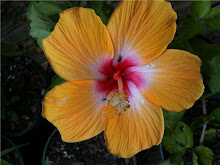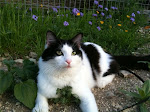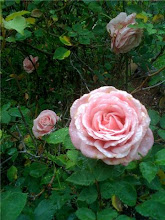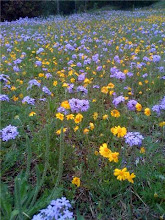 Just returned from Traditions In Western Herbalism: Medicine for the People Conference held at Mormon Lake in Coconino, Arizona. The 3-day conference focuses on sharing the herbal knowledge of teachers, healers, practitioners and rediscovering the nearly lost practice of appreciating, understanding and utilizing the healing plants that grow all around us. The conference is organized by Jesse Wolf and Kiva Rose (www.HerbalResurgence.org) who promote a supportive and lively venue to learn about native plants as well as the importance of plant conservation, bioregionalism, how to run a clinical practice and celebrating the diverse traditions, practice, culture and the art of folk herbalism. Here, you greet old friends and make new friends in the comfort of like minded plant conservationists.
Just returned from Traditions In Western Herbalism: Medicine for the People Conference held at Mormon Lake in Coconino, Arizona. The 3-day conference focuses on sharing the herbal knowledge of teachers, healers, practitioners and rediscovering the nearly lost practice of appreciating, understanding and utilizing the healing plants that grow all around us. The conference is organized by Jesse Wolf and Kiva Rose (www.HerbalResurgence.org) who promote a supportive and lively venue to learn about native plants as well as the importance of plant conservation, bioregionalism, how to run a clinical practice and celebrating the diverse traditions, practice, culture and the art of folk herbalism. Here, you greet old friends and make new friends in the comfort of like minded plant conservationists.  Herb-husband,our friend and body healer Nancy, and I flew into Phoenix and drove 3.5 hours towards our destination stopping to view the gorgeous red Sedona hills along the way.
Herb-husband,our friend and body healer Nancy, and I flew into Phoenix and drove 3.5 hours towards our destination stopping to view the gorgeous red Sedona hills along the way. (Here, Nancy and I pose for a quick pic in Sedona).
 We checked in our cabin then registered in a beautiful light strewn wooden lodge where many herbalists around our country displayed their botanical work and gifts. Here's Nicole Telkes of Austin's Wildflower School of Botanical Medicine displaying her Texas native Cactus Lotion. The inner fillet of cactus holds many of the same beneficial properties as Aloe Vera. This is a truly special way of celebrating our Texas-native cacti. Along with Nicole in the Healer's Market, I met Darcy Blue of Blue Turtle botanicals. I got to know her as I purchased her Ponderosa Pine salve - perfect for drawing out items that are trapped under the skin...like the splinter I have wedged 1/3rd into my nail bed received during the trip. I must say - it's really helping.
We checked in our cabin then registered in a beautiful light strewn wooden lodge where many herbalists around our country displayed their botanical work and gifts. Here's Nicole Telkes of Austin's Wildflower School of Botanical Medicine displaying her Texas native Cactus Lotion. The inner fillet of cactus holds many of the same beneficial properties as Aloe Vera. This is a truly special way of celebrating our Texas-native cacti. Along with Nicole in the Healer's Market, I met Darcy Blue of Blue Turtle botanicals. I got to know her as I purchased her Ponderosa Pine salve - perfect for drawing out items that are trapped under the skin...like the splinter I have wedged 1/3rd into my nail bed received during the trip. I must say - it's really helping.We started our herbal retreat with a plant walk Thursday morning with Arizona native Phyllis Hogan of Winter Sun Trading Company and Arizona Ethnobotanical Research Association (AERA). Phillis guided our group into a circle at the foot of a hill filled with rich garden herbs and explained the importance of the 21 indigenous nations in AZ.
 She reminded us of the importance of adjusting ourselves and aligning ourselves with nature before entering the plant's space. Burning a bit of Juniper to give everyone blessings we took a moment to appreciate the full circle of life. She stressed the importance of making a personal affirmation for the positive one wants to put into the world. Here are a few of the plants we met on our walk:
She reminded us of the importance of adjusting ourselves and aligning ourselves with nature before entering the plant's space. Burning a bit of Juniper to give everyone blessings we took a moment to appreciate the full circle of life. She stressed the importance of making a personal affirmation for the positive one wants to put into the world. Here are a few of the plants we met on our walk:Mallow (Malva neglecta) or Cheeseweed, common mallow. Tends to grow in disturbed areas. The Yaki used it for a weak heart or heart palpitations. Mallow's leaves look somewhat like a cheese wheel and tastes like cheese. It's a mucilaginous plant and a cold root decoction is best when working with mucilaginous herbs. A hot tea of the leaves can be made for gut health and soothes inflammation in the gut. A hair rinse can be made from the tea as well.
Chickweed (Stellaria media) was quite abundant on the hillside. In Texas, we really only see chickweed happily growing like this in early spring. You can gather fresh chickweed and juice it and drink it for wellness. Phillis said you could drink it to assist with ulceration or for burning urine. A member of our class said she uses it in tincture, tea, or poultice to assist with fibroids of the breast and uterus. She like to use a combination of chickweed and mallow oil to rub onto the skin to assist with fibroids, as well.
We also discussed Lamb's Quarters on the walk. Here's a picture of Doug Elliot with Phillis explaining the benefits of lambs quarters. He said its very high in Vitamin A and it's a tremendously healthy wild food source. You can steam it and eat as you would a vegetable or eat raw in salads.
What a wonderful way to begin the day!
Another class I really enjoyed was Lisa Ganora's Beyond Tinctures and Oils: Extracting Herbs with Honey.
 Honey is a great medium for herbal infusions since honey does not expire. Lisa mentioned that recently honey was found in Egypt that goes back 1,000 years and it was still good. Honey is a perfect food and since it is so good for you, it's an ideal medium to preserve your herbs.
Honey is a great medium for herbal infusions since honey does not expire. Lisa mentioned that recently honey was found in Egypt that goes back 1,000 years and it was still good. Honey is a perfect food and since it is so good for you, it's an ideal medium to preserve your herbs.
During the class, Lisa made Elderberry Honey. She recommends 1 part fresh herb to 2 parts honey. Heating the honey allows for the process to accelerate, however some prefer cold infusions to keep all the enzymes in tact and allow for a more nutritional end product. You can make honey infusions and honey powders using your herbs. Lisa recommends using fresh herbs when making infusions and dried finely powdered herbs for honey powders.
Lisa's Elderberry Honey was made by heating the honey until liquid-like and then adding the Elderberries into the honey and stirring and warming on very low heat for two or more hours. It's best to use a vitamix and break down the herb just before infusing into the honey to allow more surface area to infuse into the honey. Honey becomes liquid like at around 130 degrees. It's very important not to use too much heat, but just enough for the infusion to take place. Once infused, the infusion is strained leaving behind the seeds and allowing for a clean and beautifully enhanced honey. This can keep for years in the refrigerator.
I'm inspired to make a wound honey powder using my lemon mint, rose petals, thyme and self heal I grow here at home. Lisa uses rose hips, ginger, thyme in her would honey powder. It's best not to heat the honey in a wound honey recipe in order to keep the enzymes in tact benefiting from the antibacterial properties of the honey itself. The advantage of a powder over an infusion is you use the entire herb - nothing gets strained out. That's why a Vitamix or an herb grinder is helpful when trying to make fine powder out of your herbs since this is going to be the state it's in when infused in your honey.
When purchasing honey, make sure it's a good quality honey. Some honey in the supermarkets are not pure honey. Some add corn syrup and still label their product as honey.
Honey is warming, nourishing and moistening. Honey can help temper an herb that is too dry or too cold (yin) when ingested alone allowing you to take in more of the herb than you could if you ingested it alone. For example turmeric is dry. Honey will help temper this herb when infused.
Glucose oxidase is a natural component of honey. It is made by bees when water gets introduced into the hive, such as after a rain. When water mixes with glucose oxidase, it releases hydrogen peroxide, which kills bacteria really well. It also pulls the water out from the honey. Lisa said honey is good for burns and puncture wounds. I know honey really worked wonders for me when I burned myself a while back. It's very healing and comforting to the skin.
We also enjoyed listening and learning from Herbalists Charles Garcia, Paul Bergner, Sean Donahue, Howie Brounstein, 7Song, Kathleen Maier, Jesse Wolf, Kiva Rose, and many others.
We ended the last day of the conference with a fast paced hike with Doug Elliot seeing the 'big picture' of the mountains, the pine forest, birds and mammals and of course plants all along the way. Doug is a cheerful inspiring herbalist who has a gift of knowing how everything fits together in nature, all with a song in his heart and skip in his step. A perfect way to end our journey in this amazing bioregion.
Here are some pictures taken on our own walks and hikes during our stay at Mormon Lake:
Here's a picture of the resin from the Ponderosa Pine. This resin can be heated and mixed with olive oil and beeswax to make a protective salve (like the salve Darcy makes). I have a bit of resin from the forest so I plan on gently heating it and applying it straight to my fingernail to draw out the splinter wedged in my nail. It may also help pull out the splinter once the sap hardens and gets removed from the finger. I'm going to try this later today. Doug Elliot also said you can chew on the resin to protect the mouth. Its antibacterial properties helps with mouth health. When its chewed in the mouth long enough it takes on the appearance of chewed gum.
 |
| Mushrooms popping up from the forest floor |
 |
| A bluebonnet...a little reminder of home |
 |
| Mullein flowers |
 |
| Holly Grape: this area's 'Mahonia'. Here in Texas we have Agarita which also contains the beneficial yellow berberine within the woody and root parts. |
 |
| Mushroom cap - bursting out of the forest floor |
















+and+wildflowers+loving+the+field.jpg)








No comments:
Post a Comment